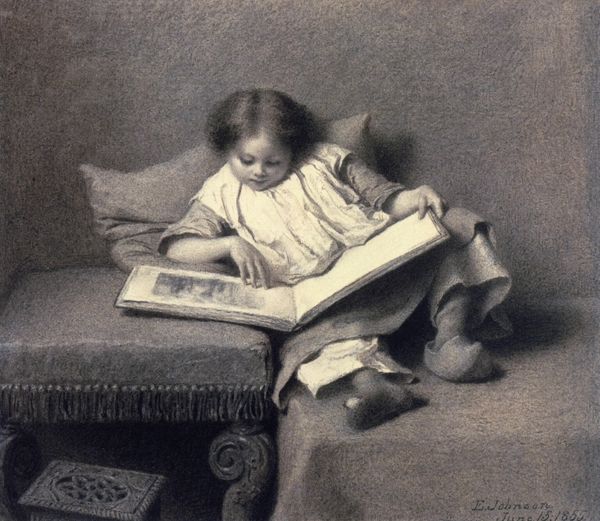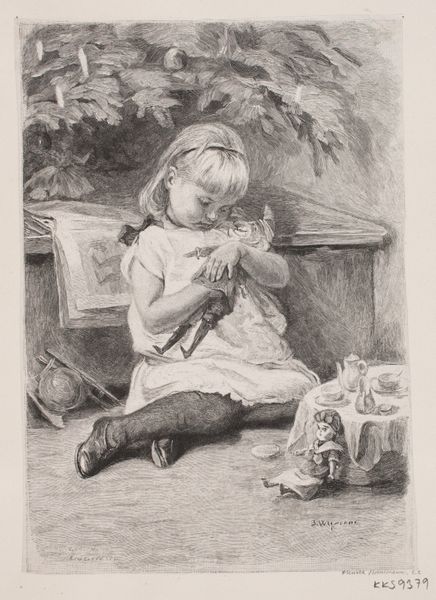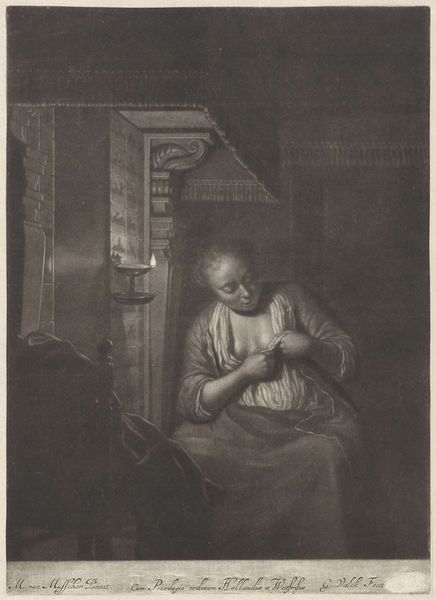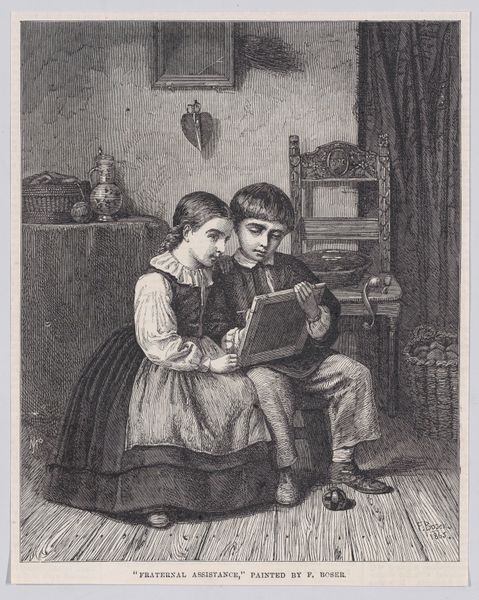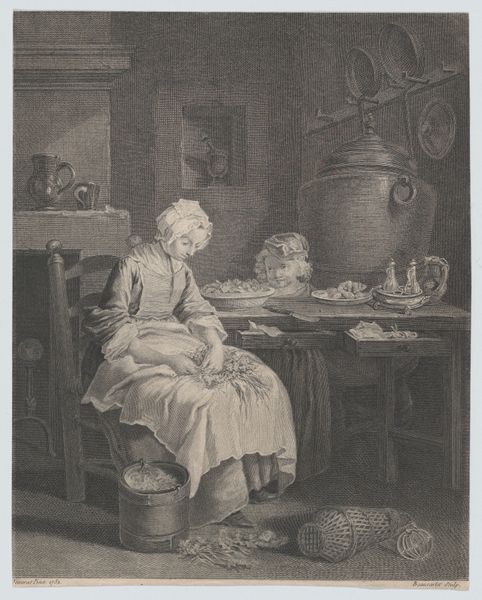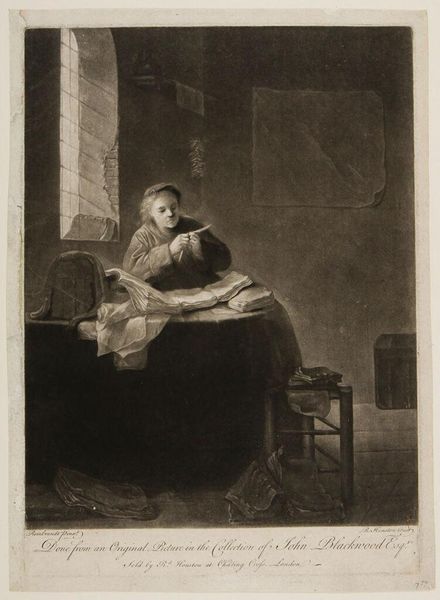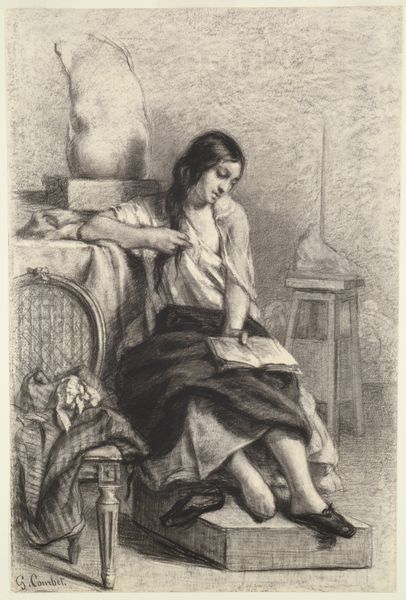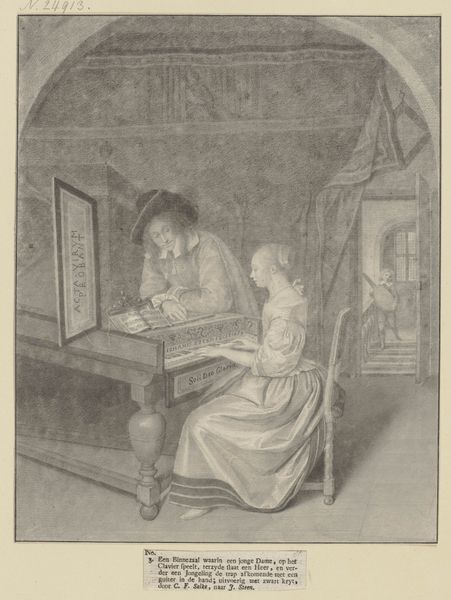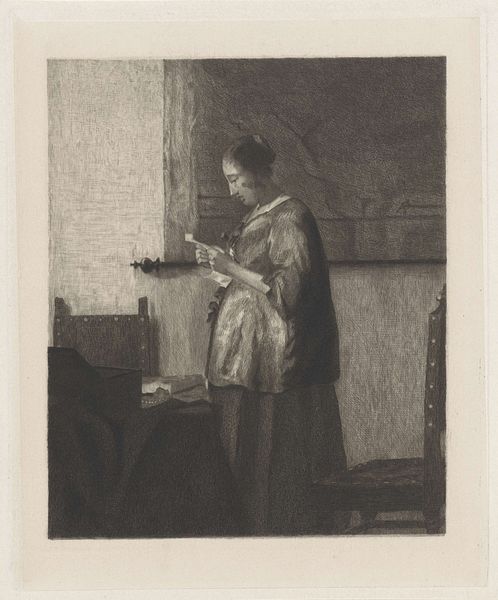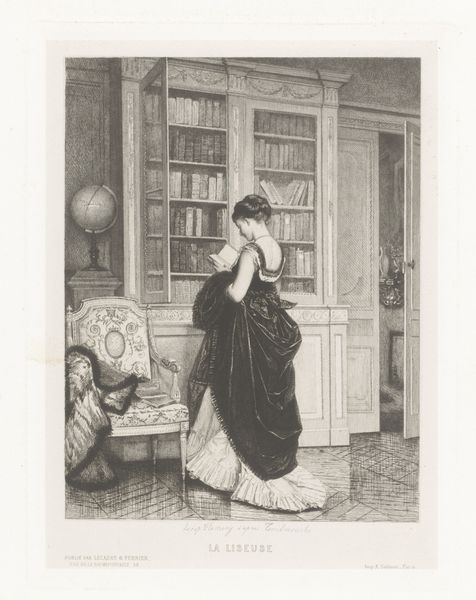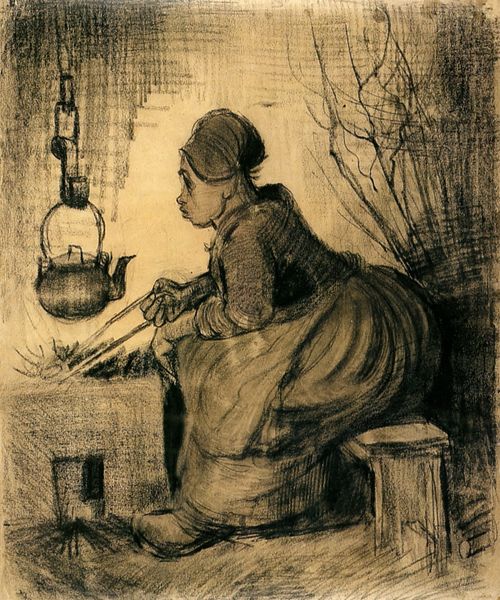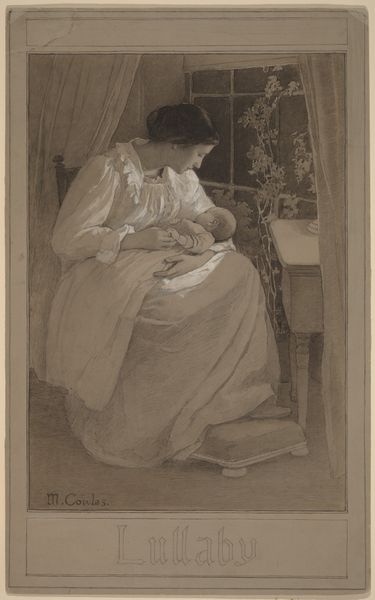
drawing, pencil, charcoal
#
portrait
#
pencil drawn
#
drawing
#
charcoal drawing
#
pencil drawing
#
pencil
#
portrait drawing
#
genre-painting
#
charcoal
#
academic-art
#
realism
Dimensions: height 373 mm, width 286 mm
Copyright: Rijks Museum: Open Domain
Curator: This is Anthony Cornelis Cramer's "Zittend lezend meisje", created sometime between 1852 and 1914. It's a drawing using pencil and charcoal, housed right here in the Rijksmuseum. Editor: Thanks! My first impression is the domestic, everyday feel to it – it makes you wonder what book has captivated her so much. What's particularly interesting to you about this piece? Curator: For me, the focus lies in how the labor and materiality come into play. This isn’t just a charming domestic scene; it's a window into 19th-century life. Think about the charcoal and pencil Cramer used. These were mass-produced materials, reflective of increasing industrialization. Consider the subject’s social standing, reflected in details of the interior. How does the level of detail influence your reading of the work? Editor: That's a cool perspective. I was so drawn into the figure, I hadn't really thought about how the *materials* themselves play a part in the meaning! It is so accessible in a way. What story do you think it is trying to tell about gender roles within domestic settings? Curator: Indeed! The very act of drawing, widely taught and practiced at the time, brings art making into the domestic sphere. Does it blur the lines between high art and everyday practice? Think of how a young woman's education or lack thereof defined her prospects. The drawing’s accessibility perhaps critiques or, even reinforces, such societal structures by offering a palatable view of feminine intellect in a contained domestic setting. How does her quiet act of reading challenge our expectations, or perhaps, conveniently sidestep true revolution? Editor: Wow, I didn't even consider the critique. This conversation has really opened my eyes to the material and social commentary embedded in the art, making me appreciate art history as more than just what's on the surface. Curator: Exactly! And considering that, our perceptions shift when examining through a materialist perspective. Now when you look at other works, I bet you will always find yourself digging to see the full cultural landscape as well.
Comments
No comments
Be the first to comment and join the conversation on the ultimate creative platform.
